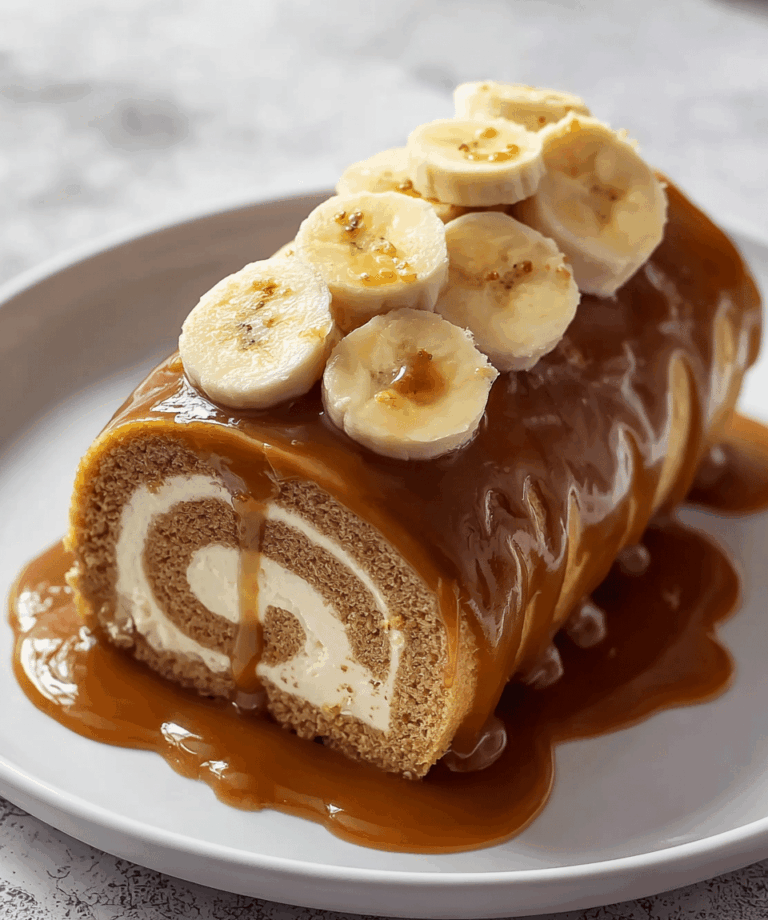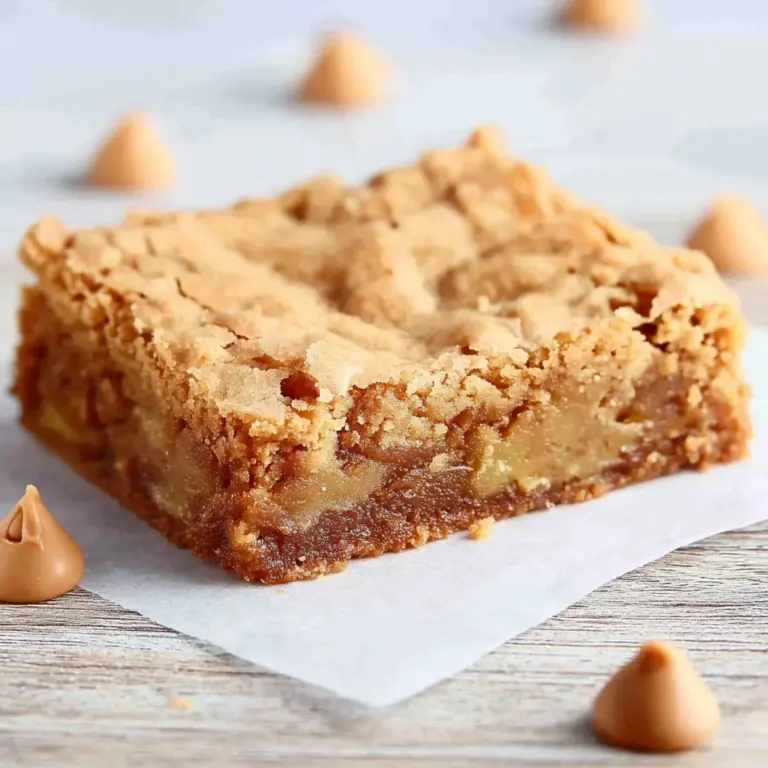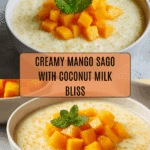Mango Sago Recipe
Mango Sago is that upbeat, joyfully sunny dessert you dream of on a scorching day—it’s a creamy, tropical treat brimming with chewy tapioca pearls and bursts of fresh mango, all swimming in velvety coconut milk. This beloved classic from Southeast Asia is pure comfort in a bowl, combining silky, sweet, and chewy textures into every spoonful. Whether enjoyed after a spicy meal or as a decadent snack, Mango Sago delivers a refreshingly fragrant punch that never fails to brighten spirits.
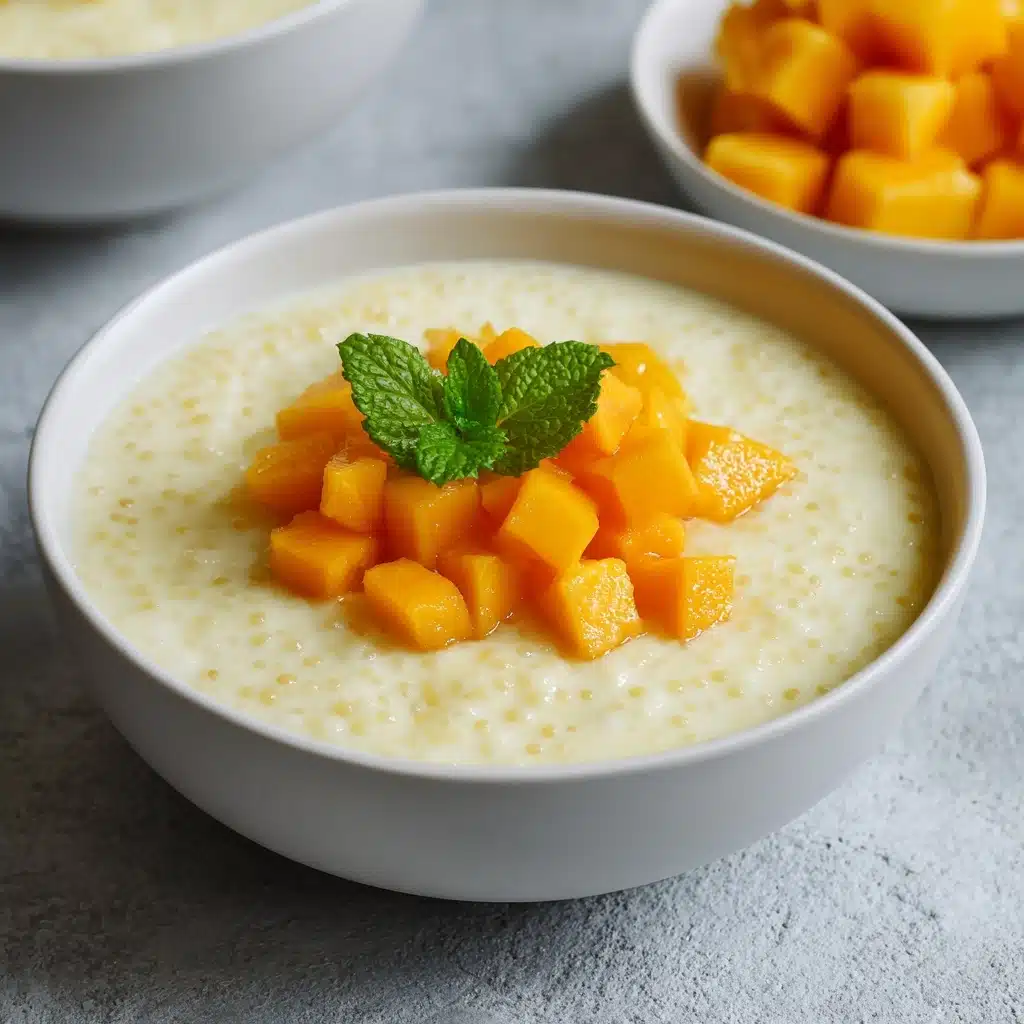
Ingredients You’ll Need
There’s something magical about how just a few simple ingredients transform into the vibrant, multi-layered delight that is Mango Sago. Every component in this list adds its own unique charm—tropical sweetness, creamy richness, or that signature chewy bite.
- Mini white tapioca pearls (sago): These pearls give Mango Sago its iconic texture, offering a delightful chewiness that soaks up every bit of flavor.
- Ripe yellow mangoes (such as Ataulfo): Their natural sweetness and golden hue are what make this dessert shine! Opt for super ripe mangoes for the fullest flavor.
- Coconut milk: The lush, creamy body of coconut milk wraps around the fruit and tapioca, delivering a luxuriously smooth finish.
- Sweetened condensed milk: Just a couple of spoonfuls draws all the flavors together and lends a gentle sweetness. Adjust based on your taste and the mangoes’ ripeness.
How to Make Mango Sago
Step 1: Cook the Tapioca Pearls
Bring 6 cups of water to a rolling boil in a medium saucepan, then pour in the uncooked tapioca pearls. Lower the heat and simmer, stirring occasionally so the pearls don’t cling to the bottom. After 15 to 20 minutes, your pearls will look almost entirely translucent with just a hint of a white dot at the center—don’t worry, that’s perfect for now!
Step 2: Rest and Rinse the Sago
Turn the heat off and let the pearls chill out in the hot water for another 15 to 20 minutes, allowing them to become completely transparent and beautifully bouncy. After resting, transfer the cooked sago to a sieve and rinse under cold water. This step ensures every pearl stays springy, not sticky, and is ready to absorb the luscious mango blend.
Step 3: Prepare the Mango
Cut each mango in half, working around the pit, and scoop out the vibrant flesh with a large spoon. Dice about 1/4 cup of mango into small cubes and set aside—these will be your finishing touch later. The rest goes right into your blender for that tropical purée.
Step 4: Blend the Base
To create the signature Mango Sago base, combine the scooped mango flesh, coconut milk, and sweetened condensed milk in a blender. If you want your dessert extra frosty, toss in a few ice cubes. Whirl everything together for 1 to 2 minutes until luscious and silky smooth.
Step 5: Combine and Serve
Divide the mango-coconut mixture among serving bowls. Gently stir in the cooled tapioca pearls until evenly dispersed. Top each bowl with those reserved mango cubes for a pop of fresh flavor and a showstopping golden finish.
How to Serve Mango Sago
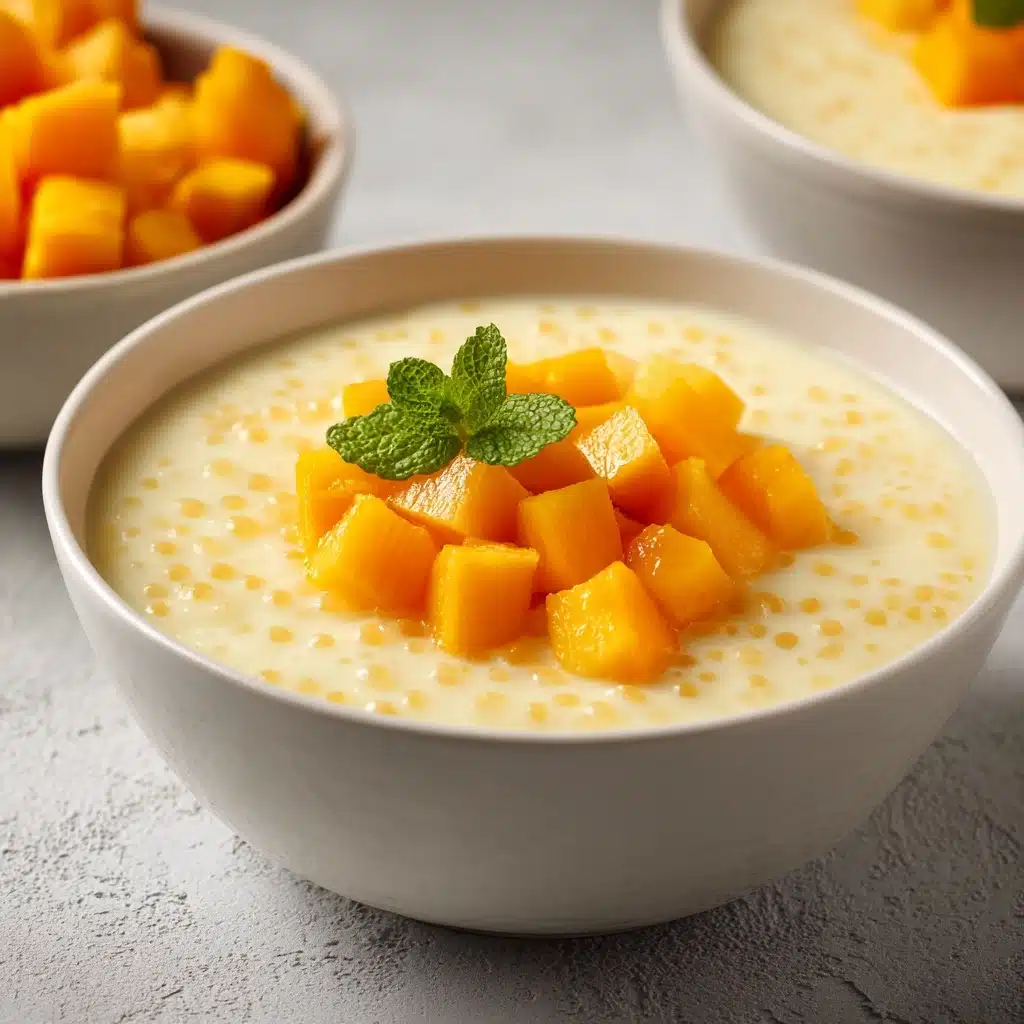
Garnishes
For a dish as bright as Mango Sago, garnishes are a chance to let your creativity shine. Sprinkle on extra cubes of ripe mango, a scatter of toasted coconut flakes, or even a few mint leaves for a little green flair. A swirl of extra coconut milk amps up the creaminess and invites plenty of oohs and ahhs when you bring it to the table.
Side Dishes
Serve Mango Sago alongside light tea cookies or a crisp coconut wafer for some crunch. Pairing it with a pot of hot jasmine tea keeps the experience refined and refreshing, especially after a zesty or spicy main course. The flavors play so well together; it’s hard not to feel instantly transported to a beachside café.
Creative Ways to Present
Take Mango Sago beyond the bowl with a few playful upgrades: pour it into clear glasses for a parfait effect, or serve in hollowed mango shells for a stunning tropical centerpiece. Layer alternating stripes of sago, mango purée, and coconut milk in small jars for a dazzling dessert on-the-go—perfect for picnics or parties!
Make Ahead and Storage
Storing Leftovers
If you find yourself with extra Mango Sago (lucky you!), transfer it to an airtight container and keep it in the refrigerator. It keeps beautifully for up to two days, though the sago may absorb more liquid as it sits—just give it a gentle stir before serving.
Freezing
Freezing Mango Sago isn’t typically recommended, as the tapioca pearls can change texture and become less chewy once thawed. If you must freeze, do so only with the mango-coconut mix; add fresh sago and cubed mango when you’re ready to serve.
Reheating
This dessert is best enjoyed cold or at room temperature, but if you accidentally left it in the fridge a little long and want to warm it slightly, just let it sit on the counter for 10 to 15 minutes. Avoid microwaving, as the sago pearls can overcook and go mushy.
FAQs
Can I use frozen mango for Mango Sago?
Absolutely! If fresh mangoes are out of season, thaw a good-quality frozen mango. It works beautifully, just make sure to drain any excess liquid before blending for the perfect creamy texture.
Is there a substitute for coconut milk?
You can use evaporated milk or even regular milk in a pinch, though you’ll lose the signature tropical flavor. For a lighter option, try almond or oat milk—just keep in mind the result will be a touch less creamy.
Why are my tapioca pearls sticking together?
A quick rinse under cold water after cooking the sago is the secret! Stir them gently to separate, and never leave cooked pearls sitting in hot water too long—they should be cooled promptly for the best texture in Mango Sago.
How can I make Mango Sago vegan?
Simply substitute the sweetened condensed milk with coconut condensed milk or use a splash of agave syrup and a touch more coconut milk. The dessert is naturally dairy-free with this easy swap!
Can I prepare Mango Sago ahead for a party?
Yes! Make the mango-coconut base and sago pearls a day in advance, store them separately in the fridge, and combine just before serving. Add the fresh mango cubes and garnishes at the last minute for the prettiest presentation.
Final Thoughts
With its golden color and knockout flavor, Mango Sago is the kind of dessert that truly delights—easy enough for weeknight cravings, yet festive enough for guests. Give it a try and you’ll see why this tropical favorite steals hearts (and spoons) everywhere!
PrintMango Sago Recipe
Indulge in the delightful flavors of Mango Sago, a sweet and creamy dessert that combines the freshness of ripe mangoes with the chewy texture of tapioca pearls. This easy-to-make recipe is a perfect treat for warm days or anytime you crave a refreshing tropical dessert.
- Prep Time: 15 minutes
- Cook Time: 20 minutes
- Total Time: 35 minutes
- Yield: 4 servings 1x
- Category: Dessert
- Method: Blending, Boiling
- Cuisine: Asian
- Diet: Vegetarian
Ingredients
Tapioca Pearls:
- 1 cup mini white tapioca pearls (known as sago), uncooked
Mango Mixture:
- 3 ripe yellow mangoes, such as Ataulfo mangos
- 1 (13.5 ounce) can coconut milk (about 1.5 cups)
- 2–3 tablespoons sweetened condensed milk (to taste)
Instructions
- Cook the Tapioca Pearls: In a medium saucepan, bring 6 cups of water to a boil. Add tapioca pearls and cook over medium-low heat for 15-20 minutes until translucent. Let rest in hot water until fully transparent. Rinse and drain.
- Prepare the Mango Sago: Scoop mango flesh into a blender, add coconut milk, condensed milk, and ice cubes if desired. Blend until smooth. Divide mixture into bowls, stir in tapioca pearls, and top with cubed mango.
Notes
- You can adjust the sweetness of the dessert by adding more or less condensed milk according to your preference.
- For a richer flavor, you can use fresh coconut milk instead of canned.
Nutrition
- Serving Size: 1 serving
- Calories: 320 kcal
- Sugar: 24g
- Sodium: 50mg
- Fat: 12g
- Saturated Fat: 10g
- Unsaturated Fat: 1g
- Trans Fat: 0g
- Carbohydrates: 50g
- Fiber: 3g
- Protein: 2g
- Cholesterol: 0mg
Keywords: Mango Sago, Mango dessert, Tapioca pearls, Asian dessert, Tropical dessert



